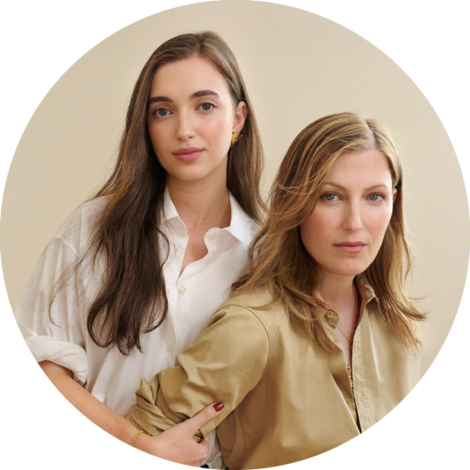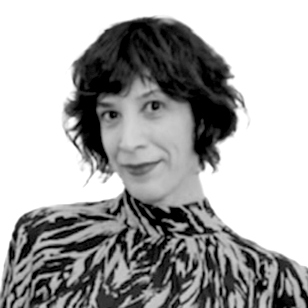Apparently Shirley MacLaine and I have a lot in common. I was informed of this immutable fact by David Kibbe, the legendary style-and-image enabler who also happens to be a golden-age-of-Hollywood savant, former piano prodigy, and, in the opinion of his wife, muse, and business partner, Susan Slavin, a one-man branch of philosophy: “David is metaphysics.”
I’m no scientist, but maybe that explains the otherworldly trajectory of a 68-year-old (or “68 going on 17,” as he says; “I disconnected from numerical ages years ago”) from a 3,000-person town, smack in the middle of Missouri, who moved to New York City in 1976 to become an actor and ended up creating a guide to bodies, clothing, and inner harmony that is, four decades later, somehow more popular than ever.
For the uninitiated, as I was before I found out that ole Shirl and I are both “Flamboyant Naturals,” Kibbe’s “Image Identity” system involves determining where a woman (men have their own program) falls among 10 so-called identities. Each “identity” is a result of a specific balance of yin and yang (opposing but complementary energies that are often defined as feminine and masculine) and the body’s “personal lines”—think length, curviness, sharpness, or softness of features.
On one end of the spectrum are the “Dramatics,” who have narrow body lines and sharpness in their structure and features. (Think Katharine Helpburn and Anna May Wong.) At the other end are the “Romantics,” who are all soft lines and curves. (Think Marilyn Monroe and Etta James.) Between them are the “Classics,” “Gamines,” and “Naturals,” with personality essences filling things out. Both Kibbe and Slavin are Theatrical Romantics— which tracks very much with their personalities too.
Kibbe explains to me that my identity, a “Flamboyant Natural,” has a whole lot of yang, because my primary line is tall (I’m five foot eight) and my secondary line is width (how dare you). But Kibbe assures me “width” pertains only to the broadness of my shoulders, not the fact that I’ve really been leaning into Trader Joe’s dark-chocolate-covered caramels lately. Instead of dressing to minimize my frame as, oh, let’s just say, my mother told me to from ages 1 to 18, Kibbe advises me to not only embrace but accentuate it.
My first encounter with the couple was over a charcuterie platter at Bar Boulud, near Lincoln Center, where Kibbe sauntered in, sheathed in layers of maroon (not burgundy, he insisted, because he’s an “Autumn”) velvet and wools. (Don’t get him started on the bad quality of clothing these days: “These pants are supposed to be wool, but, fabric today. Who knows what they’re made out of? Petroleum?”) Slavin followed soon after—in a bold purple dress with matching earrings—and spoke adoringly of Kibbe between sips of sparkling water, which he’d ordered ahead of time for her. Out of a wine glass, with a straw.
As Kibbe explains, style is about a lot more than a good outfit. It should reflect something about the person who’s wearing the clothes. “My whole idea about style is sharing,” Kibbe tells me. “It’s about sharing you. It’s about telling your story in a way of how you get people to listen to it. You’ve already been created and nature is the artist. I’m just trying to give you the technique to work in harmony with that.” His Exhibit A is Carey Mulligan’s 1950s-era Balenciaga re-creation, at this year’s Oscars. “Well, that’s a gorgeous gown. I don’t know that it has anything to do with her,” he says. “And nobody’s talking about her, but they’re all talking about the gown.”
For the past several decades, Kibbe has sermoned his gospel via a three-day, in-person (“Cameras distort!” he insists) style boot camp. A client begins her journey by writing an essay about her hopes and dreams (remember, this is not just about clothing but how to express yourself) before meeting with Kibbe to determine her Image Identity and Season (think color palette). Kibbe and Slavin conjure up the right haircut and color, which a sanctioned stylist executes. And Kibbe offers step-by-step instruction in his custom makeup line. The consultation concludes with a shopping trip to budget-appropriate boutiques. (One client got a whole wardrobe for $450, and another dropped $190,000 at Saks and, back in the day, Barneys.) When they graduate, they knows what works and what doesn’t, and, he says confidently, if they follows his rules, they will be set for a lifetime of looks. “If you really start by understanding that you’re who you’re supposed to be, and you get a little technique and listen to your heart,” he says, “that’s how you get style.”
Style doesn’t come cheap, though Kibbe says he tries to be flexible. Without divulging dollar specifics, Slavin says, with a wink, “How much would you spend on a car?” (It’s not clear what year that car is, though, because online sleuthing puts the number at less than $5,000.) For those who might not be able to afford the whole Kibbe caboodle, there’s a book, David Kibbe’s Power of Style, coming out in January 2025 with quizzes, games, and before-and-after case studies galore.
Kibbe estimates he has worked with 35,000 clients since the 1980s, when he came up with his system. He was partially inspired by season-styling Color Me Beautiful (where he was the first regional manager for the Northeast back when there were fewer than 10 employees) and partially by his days working for legendary casting agent Michael Shurtleff (who helped launch the stage careers of Dustin Hoffman, Barbra Streisand, and Bette Midler), where Kibbe acquired an understanding of what made someone stand out. “One thing I learned was, it’s all about who you are, not who you think you should be. Some people would come in and have all the attention, and some people would disappear. It wasn’t necessarily about talent.”
As the Internet expanded, fans gathered, grew, and reconnected, and with each new platform, the Kibbe community has grown. Now there’s no way to tabulate the number of people around the world preaching his philosophy, albeit without his blessing. Type in the word “Kibbe” on Reddit and you’ll find a community with 86,000 members and strict rules, including “Posts portraying any ID in a negative light or spreading stereotypes about an image ID will be deleted.” There you might see an abbreviated lingo-laden question such as one about “Naturals” wondering, “If any N fam members have dressed up for a Ren Faire, what did you wear?” There is also space on Reddit for the nearly 10,000 members of “Kibbecirclejerk” which defines itself as “a place for those with a petty essence to satirize /r/Kibbe.”
Pinterest has unsanctioned pages of outfit inspiration and actresses who represent Kibbe’s 10 different Images. And though Kibbe does approve of one invite-only Facebook page, “Strictly Kibbe,” run by three acolytes, others have popped up. And on TikTok, you can find everything from “Kibbe body type explained” to “Kibbe body type calculator,” not to mention a slew of Gen Z experts who probably weren’t even born when Kibbe was first explaining his system on The Oprah Winfrey Show and CNN.
Mackenzie Dunn has 39,500 followers and nearly 400,000 likes for posts where she proclaims, “I thought I was a Romantic. Read a lot more about this and I finally learned: Romantic, I am not!” HeyMissKelsey has 21,000,000 likes for her style posts, including one where she weighs in on what Kibbe has done for her. “Once I understood this, my relationship with my own body completely changed. Because I feel like a lot of us don’t like our bodies but honestly we just don’t like our bodies because we’re wearing the wrong clothes.” Ellie-Jean has nearly 550,000 followers and a four-plus-month waitlist for anyone wanting to shell out up to $600 for an analysis-and-styling session. For the public-transportation purists among us, that’s still less than the cost of a car.
Kibbe is not impressed with these imposters, to say the least. “People get confused, and I get blamed for all of it, but nobody bothered to ask me,” he snips. As he sees it, these TikTokers-come-lately are focusing on the wrong things. “It gets distorted when you look online and everything is ‘Kibbe body types,’” he says. “It’s not body types. It’s the opposite of that. That’s saying, ‘You’ve got to be this.’ I’m saying you can’t put a lid on your dreams. I created something that’s simple enough that would free people. That’s the whole point. To give you choice.”
“I want there to be no judgment. I don’t like this idea that there’s something wrong with you. Sometimes tall women think it’s not feminine, or people who are very tiny think no one takes them seriously. We have to get past all of that,” he says. “If you’re tall, you’re statuesque. If you’re small, your energy is sparkling. I’ve been saying this long before anybody talked about inclusivity or body positivity.”
When I’m dressing as a “Flamboyant Natural” in my “Bright Winter” shades (think rose red and emerald green), Kibbe says, I’ll fully realize my essence as a “nonchalant showstopper.” My presence is felt in a room, he says, but not in a scary way, “like Tilda Swinton.” Rather, I’m a warm and free spirit. “You are the perfect Auntie Mame,” he tells me. “I mean, you are it. If you ever have a chance to get a really long cigarette holder, you don’t even have to smoke, just walk around with it.” Truth be told, I do like a caftan.
After our meeting, I thought of the outfits I feel my best in, and, sure enough, they lined up with Kibbe’s analysis of my Image Identity. Over the next few days, I was more aware of what I put on and how it enhances my body lines as opposed to how my body would have to submit to the on-trend but very winter-unfriendly peach dress I will definitely be returning. I’m not sure my dreams have been fully realized, but I am walking with a straighter spine and feeling more confident in how I present myself. All of which is to say, Does anyone know where to get a cigarette holder?
Jessica Shaw lives in Brooklyn with her caftans, and hosts The Spotlight on SiriusXM’s Stars channel





